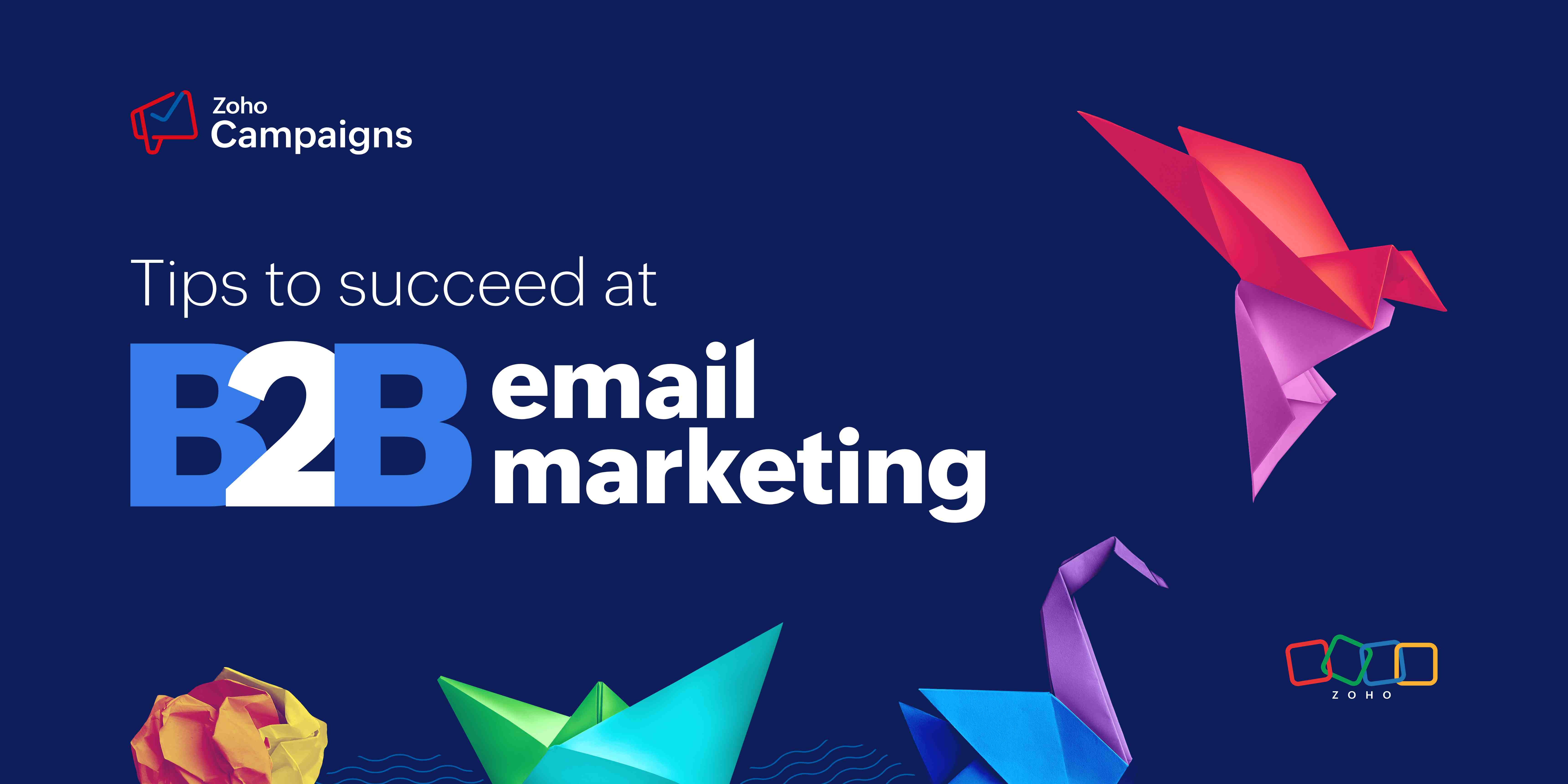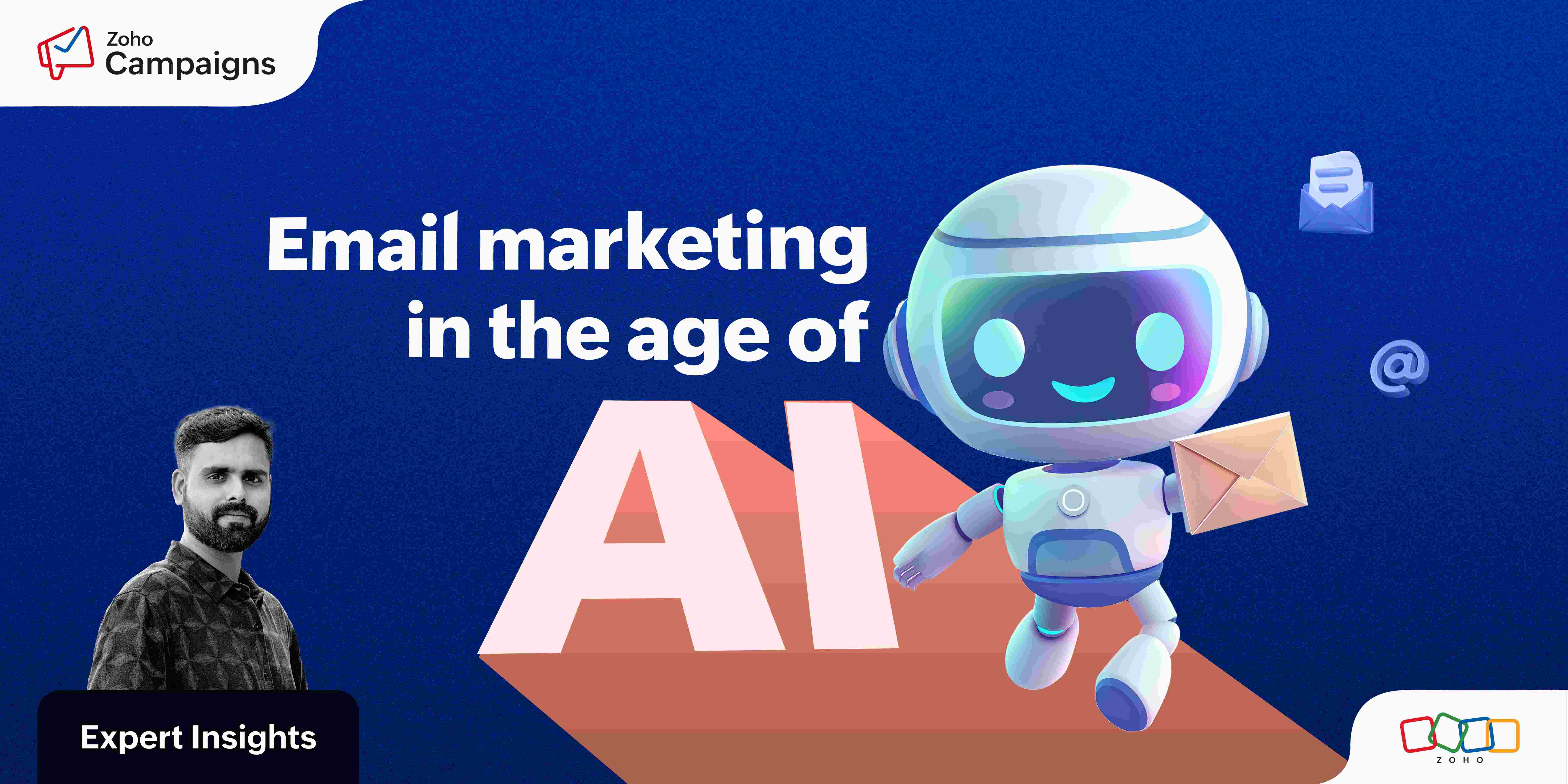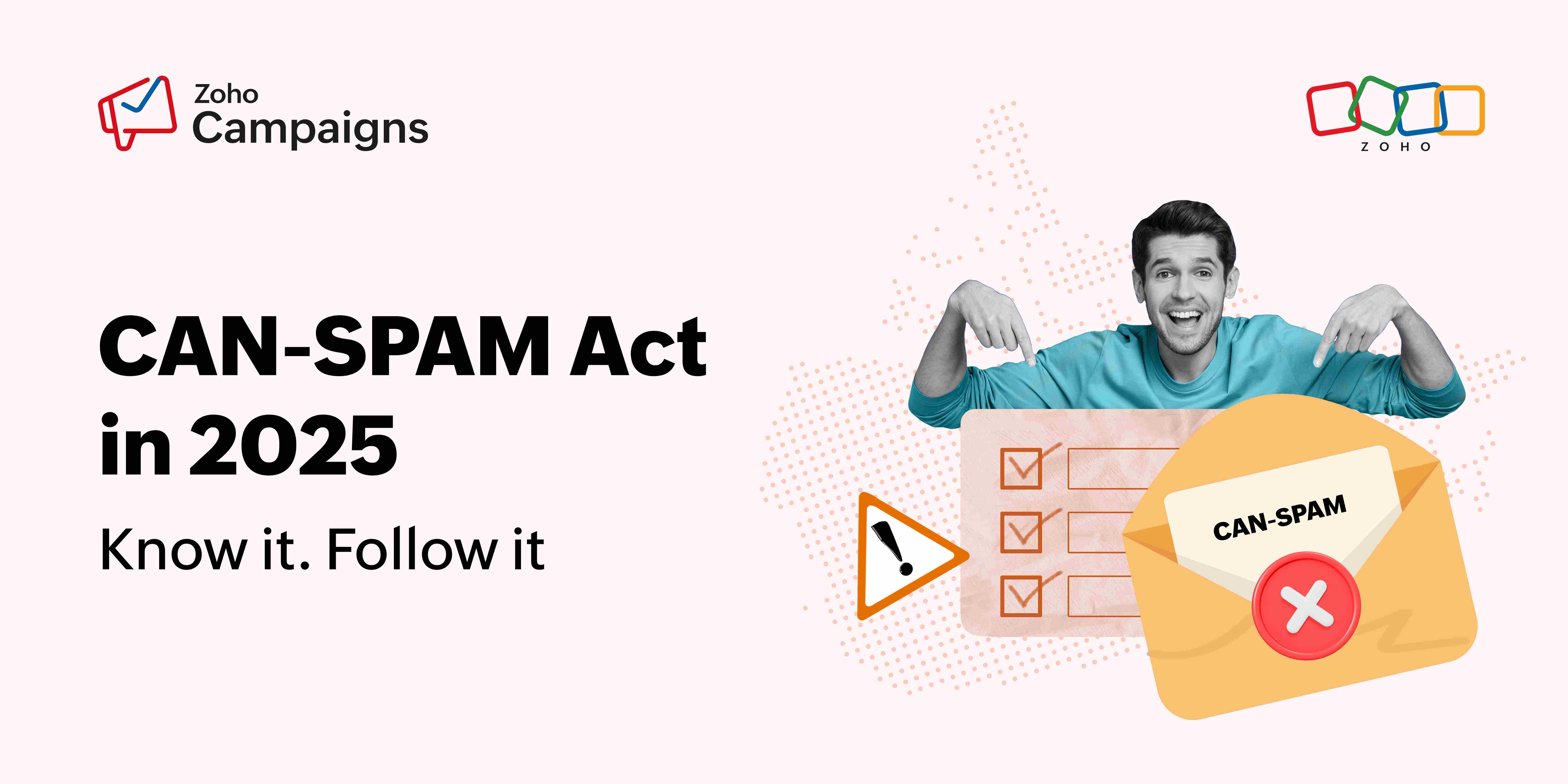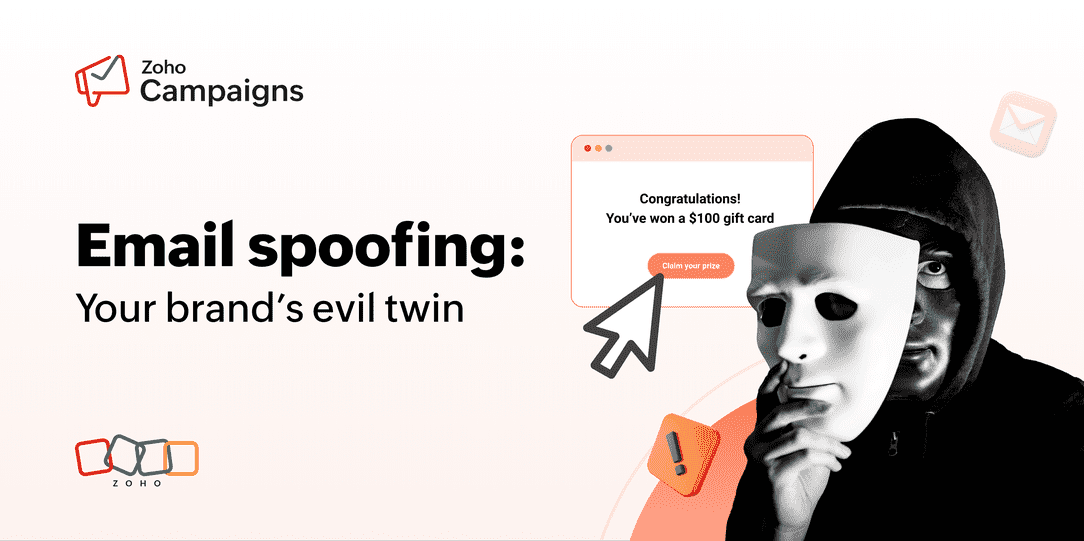- HOME
- Email Marketing
- How to plan a B2B email campaign?
How to plan a B2B email campaign?
- Last Updated : October 14, 2024
- 679 Views
- 9 Min Read

Fun, chill, casual—call it what you want, but informal language (such as calling your readers "besties") works well when you're a D2C brand. When you sell directly to your customers, triggering their emotions is a great way to do so—but it's an entirely different story for B2B marketing. The CTO of a company you're trying to sell software to is not your "bestie" now, is she? A business executive's decision to purchase from you will be driven by logic and facts.
In a bid to get the tone right in B2B email marketing, businesses often end up making their communication very B2B—that is, bland-to-boring. After all, you don't want to risk offending a professional audience.
What if we told you that you can send interesting and effective B2B emails without coming across as unprofessional?
In this blog, we'll help you plan your B2B email campaigns such that you can always send emails that resonate with your audience and result in conversions.
Goal of your email campaign
Before you get started with B2B email marketing, make sure you've determined why you're sending the campaign. Every email you send should have a purpose; it could be a one-time email announcing a feature release, or one that serves to raise brand awareness and maybe involves sending a series of emails over a period of time.
But every email should be sent with a specific goal in mind, with the most common email goals being educational, promotional, or transactional.
Target audience
Your B2B email marketing can be wildly successful or terribly futile depending on how well you define and understand your target audience.
If you know who you're targeting, understand their pain points, and use that knowledge in your email campaigns, there's nothing like it. Your emails are going to resonate with their recipients, and you stand a higher chance of getting responses.
If you fail to understand your target audience, you'll find yourself sending generic boilerplate emails to everyone without getting much engagement or results.
So take the time to research your target audience and look into your competitors' websites, reviews, and testimonials—and don't forget to talk to existing and potential customers before you start crafting your emails.
Why is B2B email marketing different from B2C or D2C?
In B2C, people make purchases for individual consumption, so B2C marketing can be as fun and creative as possible to attract people's attention. Unless you're inventing a new category, you don't need to educate customers about your product. At best, you'll have to show its features and how it compares against other players in the market.
The whole cycle in B2C is usually very short, and many customers don't go through each and every stage of the customer journey.
In B2B, people make purchases for the consumption of an entire organization. B2B sales cycles often span multiple people across multiple departments and can take anywhere from weeks to months. These purchase decisions hinge on the perceived value of your product.
Since the multiple people involved in B2B purchasing go through each of the customer journey stages, the marketing material you create should also be tailored to the company's problems, the individuals involved in the process, and the stage they're at in their buying journey.
Long-term relationships built on trust are the cornerstones for B2B success. So when you do B2B email marketing, every component of the emails you send should also work towards the same goal.
Sender name, subject line, and preheader text
You send emails to the decision makers at the businesses you're trying to sell to. What do they see first? The sender's name, subject line, and preheader text create the first impression about your business.
Sender name
Just because you're emailing on behalf of a business doesn't mean that the email should sound like it came from a machine. The sender name you use can be personal, yet easy to recall. You can still put a human spin on it (after all, there are people at both ends of your emails).
Adding a personal touch to your B2B emails adds personality to them and increases brand recall.
Example: There maybe a hundred senders with the word Growth as part of their brand name, but there's only one Brendan from Growth Sprints, which makes it easy to recall the brand.

Ideal subject line in B2B email marketing
Your subject line decides the fate of your email: To open or to ignore?
Put yourself in the shoes of the person you're emailing. Your subject line should attract the recipient's attention and pique their curiosity enough to open your email.
For your B2B subject lines, you could use the classic WIIFM tactic; "What's in it for me?" is what every executive thinks before opening a marketing email. So make sure you answer that in your subject line to get your emails opened.
Guidelines for B2B email subject lines
Keep them short (three to five words).
Include an emoji only if it's relevant.
Use hooks to draw the reader in.
Don't do a bait and switch; what you offer in the subject line should be present in the email's content.
Example:
This newsletter targets marketers—specifically, content marketers. As one of the most prominent techniques used to attract audiences, SEO is something content marketers should account for when creating content. The following subject line works really well, as it would highly resonate with any content marketer.

Preheader text is as important as your subject line
A preheader is the text that appears below the subject line, and acts as a short summary of the email. If you fail to include the preheader text when you send your email, it gets auto-generated.
Example:
If you leave preheader text to chance, the wrong text might be chosen, and may ask your reader to unsubscribe even before they open the email.

But if you do it right, the preheader is a seamless addition to the subject line that nudges the reader toward opening the email. When both the subject line and preheader provide value to the reader, they simply cannot ignore the email.
Example:
This newsletter targets founders. Who would a founder like to hear from more than a successful first-time founder?

Email body : Ideal email tone, content, and design
Now that you know how to write emails that get you the open, let's look at how to create B2B email content that drives results.
Email tone
Keep your email voice consistent with your brand tone. Don't sound too robotic. Use a conversational tone and write the kinds of emails you would read if you were on the other end. Yes, this is B2B, but in the end, you're a person representing a business, talking to another person representing a business.
While conveying how their company can benefit from yours is important, you don't have to start selling right away. First, try to convince the recipient of your product's value by providing all the relevant information, and then slowly nudge them toward taking the desired action.
Email content
Your content should answer one or more of the following questions:
What are the biggest challenges in their role/business?
How can your product or service solve their pain points?
Why should they choose your company over another?
Even if you send purely educational emails, the content you create can be a solution for the questions or problems your prospects may be having, and should thus establish you as an expert in your field.
Step back from the monotonous B2B email content that's just plain sales text and add multiple other content formats, such as articles, reports, ebooks, videos, case studies, how-to guides, webinars, and more. You can embed or link to these different formats inside the email body to switch up the email content.
Emojis in emails
Using too many emojis is a strict no in B2B communication. However, you can use emojis sparingly to highlight key points or try to lighten the mood. Emails are more personal than a research report, so even within the B2B context, you can use emojis conservatively to create some visual breaks.
For instance, ending an email to prospects with "If you have more questions, I'd be happy to answer them 😊" is okay. Check this blog to learn more about how, where, and what emojis you can use in emails.
Email design and images
B2B email marketing doesn't have to consist of text-only emails. While a nice design layout without images can make even plain-text emails look good, you can add images, too. Depending on the context of your business and the business you're selling to, you can include appropriate icons, logos, photos, and illustrations. Make sure your brand colors, fonts, images are consistent with how your brand presents itself on its website, social media, and other channels.
For instance, if you're sending a newsletter with links to your top blogs from the last month, you can include banner images from the blog to add some character to the email. You can create email templates for different email types and use them according to the campaign you're sending out.
Call to action (CTA)
All your effort spent on writing and designing emails will go to waste if you don't include the right CTAs. What do you want the recipient to do after they read your email? Convey that through the CTA. Make your CTA clear and actionable, and don't have more than one action item in your email.
If you ask your reader to click to sign up, reply to book a meeting, and watch a video to understand your product all at once, they're going to get overwhelmed and might end up doing nothing. So make sure every email has one primary goal and that your CTA aligns with that goal.
Examples for B2B CTAs:
Start your free trial
Book a demo
Download our ebook
Book a meeting
Register for our webinar
Complete our survey
How to track B2B email marketing campaigns?
Every marketer wants to know the answer to one question: How many emails can I reasonably send (and when?) so that I don't spam my audience, but also don't get lost in the inbox?
While it would be great if there was a magical ideal number for email marketing, the answer isn't so simple in reality.
Let's break it down, shall we?
Email timing
When it comes to timing the emails you send, you should take into account the time zone and work schedule of your email's recipient. If you send an email on Monday morning (to be the proverbial early bird), but it ends up being Sunday night at the recipient's end, chances are that your email will get buried deep in their inbox and never see the light of the day.
Let's say you want to send some cold emails. Mondays are usually when executives catch up with whatever happened over the weekend and plan for the week. Fridays are when they start winding down for the week and leave unimportant stuff for the next week. The days in between would be your best bet to do some cold emailing.
Similarly, depending on what the purpose of your email is, who you're emailing, where they live, and what they do, you can try different times of the day, week, and month. Once you find a time that works well for you, you can stick with it.
Choose value over volume
Never send emails for the sake of sending emails. Focus on providing value. Incessant emailing will reduce your open rates, and honestly, a busy senior executive isn't exactly going to enjoy receiving a ton of emails (no matter how good your emails might be).
Even if you only do a monthly email, it should be so full of value that your recipient anticipates receiving it.
Remember, patience is always key in B2B email marketing, as marketing and sales cycles are typically long.
Let your recipients hold the reins
Another way you can ensure email value over email volume is by handing the reins of your emails to your recipients. Categorize your emails by topic and let your readers choose the topics and frequency of the emails they want to receive from you. You can also segment your audience into different groups and send emails customized to their pain points and interests.
Make unsubscribing easy
Providing a clearly visible unsubscribe button is not only mandatory, but also beneficial. If you make unsubscribing an impossible task, businesses are less likely to buy from you; even worse, they're going to mark you as spam, which will make it more difficult for your emails to reach other businesses' inboxes.
So learn to let go of those businesses who don't want to hear from you. There are always others who do, and you should focus your energy on them.
Conclusion
While the tips we've given above can serve as general suggestions, you'll have to figure out what works best for you specifically. By defining goals for your campaigns, learning who your customers are (this blog on customer journey mapping might help you), and testing out different components of your emails (check out this guide on email A/B testing), you can learn to craft perfect emails that help your B2B business grow.
All in all, B2B email marketing requires a delicate balance between predictability and unpredictability. Make your emails predictable, in that your recipient knows for sure that your email offers something of value, but also make your emails unpredictable, such that they can't wait to hear more from you.
We hope this blog helps you turn B2Bland emails into B2Brilliant ones. Happy B2B email marketing! :)
 Vidhya Vijayaraghavan
Vidhya VijayaraghavanHi! I'm Vidhya, a storyteller and problem solver. I wholeheartedly believe that B2B content doesn't have to be boring.
When not writing or having a writer's block, you can catch me reading, puzzling, or volunteering.
I'm game for a conversation about anything, especially B2B SaaS marketing (and cats too!).



